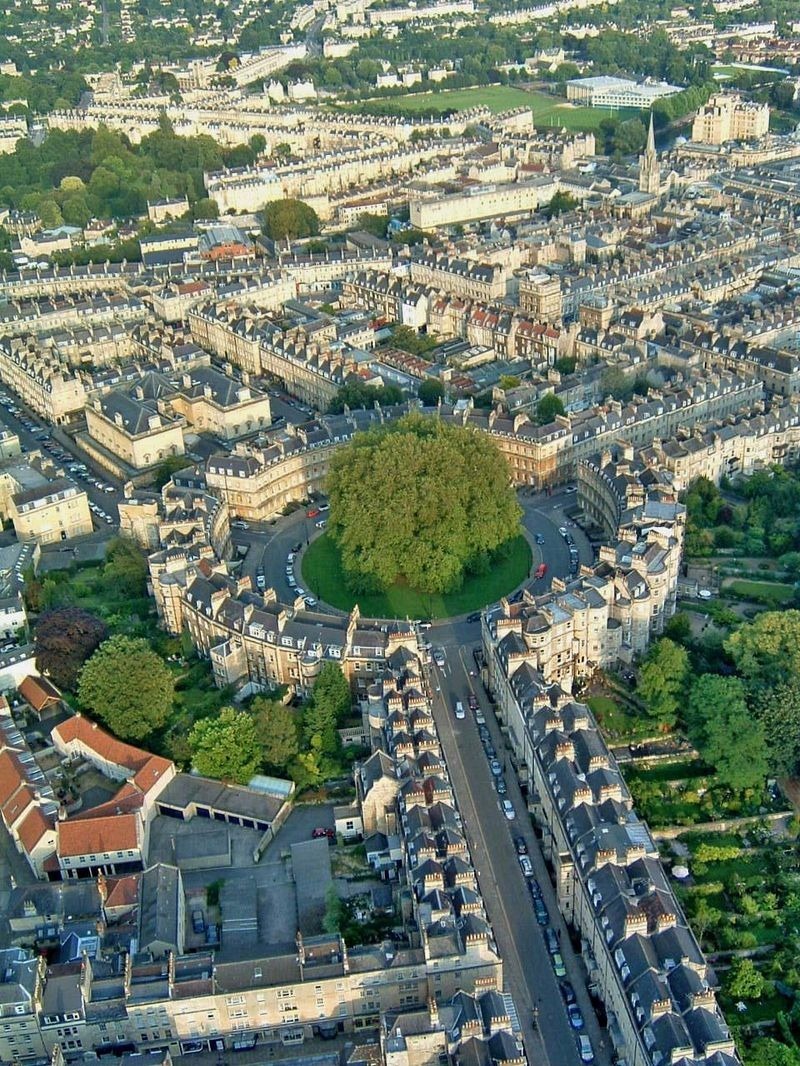The Circus, Latin for “circular”, is an iconic building in the city of Bath, in Somerset, in England, consisting of three curved segments of Grade I listed townhouses arranged in a circular shape. Originally known as The King’s Circus, this 18th century landmark was designed by architect John Wood, the Elder, although he never lived to see his plans turned into reality as he died less than three months after the first stone was laid in 1754. His son, John Wood the Younger, completed the building in 1768.
Wood wanted to create a classical Palladian architectural landscape for the city. His inspiration was the Roman Colosseum, but whereas the Colosseum was designed to be seen from the outside, the Circus faces inwardly. If you look closely at the detail on the stonework and you’ll see many emblems, such as serpents, acorns, nautical symbols, devices representing the arts and sciences, and masonic symbols. Wood was also fascinated by prehistoric stone circles. The acorns atop the Circus parapets is thought to be his tribute to the druids, who were supposed to have created the Stonehenge.
The central area of the Circus originally contained a large reservoir that supplied water to the houses. The reservoir was paved over with stone setts and turned into a grassy garden in the 1800s, about fifty years after the first residents moved in. A group of old plane trees now grow at the center. Around this garden and between the buildings run a circular street, with three exits between the townhouses. When viewed from the air, the Circus, along with Queens Square and the adjoining Gay Street, form a key shape, which is a masonic symbol similar to those that adorn many of Wood's buildings.
The Circus has been home to a number of famous people over the years. The artist Thomas Gainsborough lived at number 17 between 1758 and 1744, using the house as his portrait studio. William Pitt, the then Earl of Chatham and in his second term as Prime Minister, moved from his double-sized house in the south-western segment to one almost as large at no.11, while the spacious central house at no.14 was taken by John, 4th Duke of Bedford. Many wealthy and influential people had made the Circus their second or third home, making seasonal visits around the year.
During the Bath Blitz in 1942, part of the Circus was badly damaged. These have been now reconstructed and restored to the original style.
Sources: Visit Bath / Wikipedia























Comments
Post a Comment